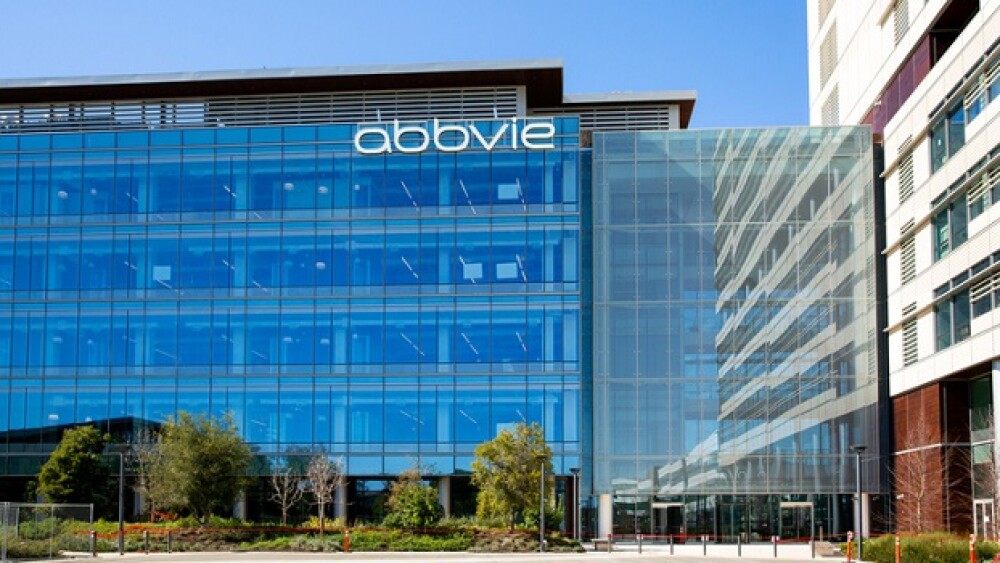Nuance Communications, Inc. (NASDAQ: NUAN) today announced financial results for its first quarter ended December 31, 2020:
|
BURLINGTON, Mass., Feb. 8, 2021 /PRNewswire/ -- Nuance Communications, Inc. (NASDAQ: NUAN) today announced financial results for its first quarter ended December 31, 2020:
"We are very pleased with the strong start to the fiscal year, as we delivered revenue and EPS above our guidance range expectations," said Mark Benjamin, Chief Executive Officer at Nuance. "We continued to advance our strategic initiatives, accelerating our cloud transition across our core platforms in Healthcare and focusing on our AI-first approach in Enterprise. In Healthcare, we saw solid performance in our cloud-based offerings, growing cloud revenue 28% year-over-year. In particular, we benefited from strong performance in Dragon Medical & DAX Cloud revenue, which grew 22% year-over-year driven by the ongoing transition of our installed base to Dragon Medical One, as well as traction in international, ambulatory and community hospital markets. Enterprise delivered another record revenue quarter, up slightly from its previous record in Q1'20, driven by particularly strong demand for our Security & Biometrics solutions." Mr. Benjamin concluded, "In a separate release today, we announced the acquisition of Saykara, a like-minded healthcare IT company that aligns well with our technology portfolio and growth strategy. This acquisition brings together the best and brightest minds in AI, machine learning, and ambient technologies for healthcare, and we are pleased to be adding even more leading scientists and developers to our world-class R&D team." As previously announced, in the first quarter of 2021 we announced the sale of our medical transcription and electronic healthcare record go-live businesses. The sale is on track to close during Q2 2021. Accordingly, we are now presenting our results on a continuing and discontinued operations basis, giving effect to the disposition of these businesses. All commentary is provided on a continuing operations basis. A reconciliation of continuing and discontinued operations to total operations is provided in the accompanying tables. Q1 2021 Performance Summary Q1 2021 results for continuing operations include:
Capital Allocation We remain committed to our balanced capital allocation approach. In February, we replaced our revolving credit facility, with the maturity date now extended to 2026 and the facility upsized to $300 million. We did not repurchase any shares during the first quarter, and have $261 million remaining under our share repurchase board authorization. We remain confident in the strength of our balance sheet and our liquidity position, ending the first quarter with a cash and marketable securities balance of $374 million, above our target minimum cash balance range. For a complete discussion of Nuance's results and business outlook, including our updated guidance, please see the Company's Prepared Remarks document available at https://investors.nuance.com/quarterly-results. Please refer to the "Discussion of Non-GAAP Financial Measures," and "GAAP to Non-GAAP Reconciliations," included elsewhere in this release, for more information regarding the Company's use of non-GAAP financial measures. Conference Call and Prepared Remarks Nuance will host a conference call today at 5:00 p.m. ET. To participate, please access the live webcast here, or by dialing 1-888-317-6003 (US and Canada) or 1-412-317-6061 (international) and referencing code 9035615. Nuance will provide a copy of Prepared Remarks in combination with this press release. These remarks are offered to provide shareholders and analysts additional detail for analyzing the results. The remarks are available at http://investors.nuance.com and will not be read on the call. About Nuance Communications, Inc. Nuance Communications, Inc. (NASDAQ: NUAN) is a technology pioneer with market leadership in conversational AI and ambient intelligence. A full-service partner trusted by 90 percent of U.S. hospitals and 85 percent of the Fortune 100 across the globe, we create intuitive solutions that amplify people's ability to help others. Trademark reference: Nuance and the Nuance logo are registered trademarks or trademarks of Nuance Communications, Inc. or its affiliates in the United States and/or other countries. All other trademarks referenced herein are the property of their respective owners. Safe Harbor and Forward-Looking Statements Statements in this document regarding future performance and our management's future expectations, beliefs, goals, plans or prospects constitute forward-looking statements within the meaning of the Private Securities Litigation Reform Act of 1995. Any statements that are not statements of historical fact (including statements containing the words "believes," "plans," "anticipates," "expects," "intends" or "estimates" or similar expressions) should also be considered to be forward-looking statements. There are a number of important factors that could cause actual results or events to differ materially from those indicated by such forward- looking statements, including but not limited to: the impact of the COVID-19 pandemic, the effects of competition, including pricing pressure, and changing business models in the markets and industries in which we operate; fluctuations in demand for our existing and future products; changes to economic, political, and regulatory conditions in the United States and internationally; our ability to attract and retain key personnel; our ability to control and successfully manage our expenses and cash position; cybersecurity and data privacy incidents or breaches, and related remediation and investigation; our ability to comply with applicable domestic and international laws and policies; fluctuating currency rates; possible quality issues in our products and technologies; our ability to realize anticipated synergies from acquired businesses, to cut stranded costs related to divested businesses, and to capture the expected value from strategic transactions; and the other factors described in our most recent Form 10-K, Form 10-Q and other filings with the Securities and Exchange Commission. We disclaim any obligation to update any forward-looking statements as a result of developments occurring after the date of this document. Discussion of Non-GAAP Financial Measures We believe that providing non-GAAP ("Generally Accepted Accounting Principles") information to investors, in addition to the GAAP presentation, allows investors to view the financial results in the way management views the operating results. We further believe that providing this information allows investors not only to better understand our financial performance, but also to evaluate the efficacy of the methodology and information used by management to evaluate and measure such performance. The non-GAAP information included in this press release should not be considered superior to, or a substitute for, financial statements prepared in accordance with GAAP. We utilize a number of different financial measures, both GAAP and non-GAAP, in analyzing and assessing the overall performance of the business, for making operating decisions and for forecasting and planning for future periods. Our annual financial plan is prepared both on a GAAP and non-GAAP basis, and the non-GAAP annual financial plan is approved by our board of directors. Continuous budgeting and forecasting for revenue and expenses are conducted on a consistent non-GAAP basis (in addition to GAAP) and actual results on a non-GAAP basis are assessed against the non-GAAP annual financial plan. The board of directors and management utilize these non-GAAP measures and results (in addition to the GAAP results) to determine our allocation of resources. In addition, and as a consequence of the importance of these measures in managing the business, we use non-GAAP measures and results in the evaluation process to establish management's compensation. For example, our annual bonus program payments are based upon the achievement of consolidated non-GAAP revenue and consolidated non-GAAP earnings per share financial targets. We consider the use of non-GAAP revenue helpful in understanding the performance of our business, as it excludes the purchase accounting impact on acquired deferred revenue and other acquisition-related adjustments to revenue. We also consider the use of non-GAAP earnings per share helpful in assessing the organic performance of the continuing operations of our business. By organic performance we mean performance as if we had owned an acquired business in the same period a year ago. By constant currency organic performance, we mean performance excluding the effect of current foreign currency rate fluctuations. By continuing operations, we mean the ongoing results of the business excluding certain unplanned costs. Consistent with this approach, we believe that disclosing non-GAAP financial measures to the readers of our financial statements provides such readers with useful supplemental data that, while not a substitute for GAAP financial statements, allows for greater transparency in the review of our financial and operational performance. In assessing the overall health of the business during the three months ended December 31, 2020 and 2019, our management has either included or excluded items in seven general categories, each of which is described below. Acquisition-related revenue and cost of revenue. We provide supplementary non-GAAP financial measures of revenue that include revenue that we would have recognized but for the purchase accounting treatment of acquisition transactions. Non-GAAP revenue also includes revenue that we would have recognized had we not acquired intellectual property and other assets from the same customer. Because GAAP accounting requires the elimination of this revenue, GAAP results alone do not fully capture all of our economic activities. These non-GAAP adjustments are intended to reflect the full amount of such revenue. We include non-GAAP revenue and cost of revenue to allow for more complete comparisons to the financial results of historical operations, forward-looking guidance and the financial results of peer companies. We believe these adjustments are useful to management and investors as a measure of the ongoing performance of the business because, although we cannot be certain that customers will renew their contracts, we have historically experienced high renewal rates on maintenance and support agreements and other customer contracts. Additionally, although acquisition-related revenue adjustments are non-recurring with respect to past acquisitions, we generally will incur these adjustments in connection with any future acquisitions. Restructuring and other costs, net. Restructuring and other charges, net include restructuring expenses as well as other charges that are unusual in nature, are the result of unplanned events, and arise outside the ordinary course of our business. Restructuring expenses consist of employee severance costs, charges for the closure of excess facilities and other contract termination costs. Other charges include litigation contingency reserves, asset impairment charges, expenses associated with the malware incident that occurred in the third quarter of fiscal year 2017 (the "2017 Malware Incident") and gains or losses on the sale or disposition of certain non-strategic assets or product lines. Acquisition-related costs, net. In recent years, we have completed a number of acquisitions, which result in operating expenses, that would not otherwise have been incurred. We provide supplementary non-GAAP financial measures, which exclude certain transition, integration and other acquisition-related expense items resulting from acquisitions, to allow more accurate comparisons of the financial results to historical operations, forward looking guidance and the financial results of less acquisitive peer companies. We consider these types of costs and adjustments, to a great extent, to be unpredictable and dependent on a significant number of factors that are outside of our control. Furthermore, we do not consider these acquisition-related costs and adjustments to be related to the organic continuing operations of the acquired businesses and are generally not relevant to assessing or estimating the long-term performance of the acquired assets. In addition, the size, complexity and/or volume of past acquisitions, which often drives the magnitude of acquisition related costs, may not be indicative of the size, complexity and/or volume of future acquisitions. By excluding acquisition-related costs and adjustments from our non-GAAP measures, management is better able to evaluate our ability to utilize our existing assets and estimate the long-term value that acquired assets will generate for us. We believe that providing a supplemental non-GAAP measure, which excludes these items allows management and investors to consider the ongoing operations of the business both with, and without, such expenses. These acquisition-related costs fall into the following categories: (i) transition and integration costs; (ii) professional service fees and expenses; and (iii) acquisition-related adjustments. Although these expenses are not recurring with respect to past acquisitions, we generally will incur these expenses in connection with any future acquisitions. These categories are further discussed as follows:
Amortization of acquired intangible assets. We exclude the amortization of acquired intangible assets from non-GAAP expense and income measures. These amounts are inconsistent in amount and frequency and are significantly impacted by the timing and size of acquisitions. Providing a supplemental measure which excludes these charges allows management and investors to evaluate results "as-if" the acquired intangible assets had been developed internally rather than acquired and, therefore, provides a supplemental measure of performance in which our acquired intellectual property is treated in a comparable manner to our internally developed intellectual property. Although we exclude amortization of acquired intangible assets from our non-GAAP expenses, we believe that it is important for investors to understand that such intangible assets contribute to revenue generation. Amortization of intangible assets that relate to past acquisitions will recur in future periods until such intangible assets have been fully amortized. Future acquisitions may result in the amortization of additional intangible assets. Non-cash expenses. We provide non-GAAP information relative to the following non-cash expenses: (i) stock-based compensation; and (ii) non-cash interest. These items are further discussed as follows:
Other expenses. We exclude certain other expenses that result from unplanned events outside the ordinary course of continuing operations, in order to measure operating performance and current and future liquidity both with and without these expenses. By providing this information, we believe management and the users of the financial statements are better able to understand the financial results of what we consider to be our organic, continuing operations. Included in these expenses are items such as restructuring charges, asset impairments and other charges (credits), net, and losses from extinguishing our convertible debt. Other items such as consulting and professional services fees related to assessing strategic alternatives and our transformation programs, implementation of the new revenue recognition standard (ASC 606), and expenses associated with the malware incident and remediation thereof are also excluded. Non-GAAP Operating Income Our non-GAAP operating income includes acquisition-related revenue adjustments but excludes non-GAAP expenses such as stock compensation, amortization of intangible assets, restructuring and other costs, net, acquisition-related costs, net, and certain other expenses that result from unplanned events outside the ordinary course of continuing operations. Non-GAAP income tax provision. Our non-GAAP income tax provision is determined based on our non-GAAP pre-tax income. The tax effect of each non-GAAP adjustment, if applicable, is computed based on the statutory tax rate of the jurisdiction to which the adjustment relates. Additionally, as our non-GAAP profitability is higher based on the non-GAAP adjustments, we adjust the GAAP tax provision to remove valuation allowances and related effects based on the higher level of reported non-GAAP profitability. We also exclude from our non-GAAP tax provision certain discrete tax items as they occur. Contact Information For Investors For Press Financial Tables Follow
SOURCE Nuance Communications, Inc. |
||||||||||||||||||||||||||||||||||||||||||||||||||||||||||||||||||||||||||||||||||||||||||||||||||||||||||||||||||||||||||||||||||||||||||||||||||||||||||||||||||||||||||||||||||||||||||||||||||||||||||||||||||||||||||||||||||||||||||||||||||||||||||||||||||||||||||||||||||||||||||||||||||||||||||||||||||||||||||||||||||||||||||||||||||||||||||||||||||||||||||||||||||||||||||||||||||||||||||||||||||||||||||||||||||||||||||||||||||||||||||||||||||||||||||||||||||||||||||||||||||||||||||||||||||||||||||||||||||||||||||||||||||||||||||||||||||||||||||||||||||||||||||||||||||||||||||||||||||||||||||||||||||||||||||||||||||||||||||||||||||||||||||||||||||||||||||||||||||||||||||||||||||||||||||||||||||||||||||||||||||||||||||||||||||||||||||||||||||||||||||||||||||||||||||||||||||||||||||||||||||||||||||||||||||||||||||||||||||||||||||||||||||||||||||||||||||||||||||||||||||||||||||||||||||||||||||||||||||||||||||||||||||||||||||||||||||||||||||||||||||||||
Company Codes: NASDAQ-NMS:NUAN |
||||||||||||||||||||||||||||||||||||||||||||||||||||||||||||||||||||||||||||||||||||||||||||||||||||||||||||||||||||||||||||||||||||||||||||||||||||||||||||||||||||||||||||||||||||||||||||||||||||||||||||||||||||||||||||||||||||||||||||||||||||||||||||||||||||||||||||||||||||||||||||||||||||||||||||||||||||||||||||||||||||||||||||||||||||||||||||||||||||||||||||||||||||||||||||||||||||||||||||||||||||||||||||||||||||||||||||||||||||||||||||||||||||||||||||||||||||||||||||||||||||||||||||||||||||||||||||||||||||||||||||||||||||||||||||||||||||||||||||||||||||||||||||||||||||||||||||||||||||||||||||||||||||||||||||||||||||||||||||||||||||||||||||||||||||||||||||||||||||||||||||||||||||||||||||||||||||||||||||||||||||||||||||||||||||||||||||||||||||||||||||||||||||||||||||||||||||||||||||||||||||||||||||||||||||||||||||||||||||||||||||||||||||||||||||||||||||||||||||||||||||||||||||||||||||||||||||||||||||||||||||||||||||||||||||||||||||||||||||||||||||||





